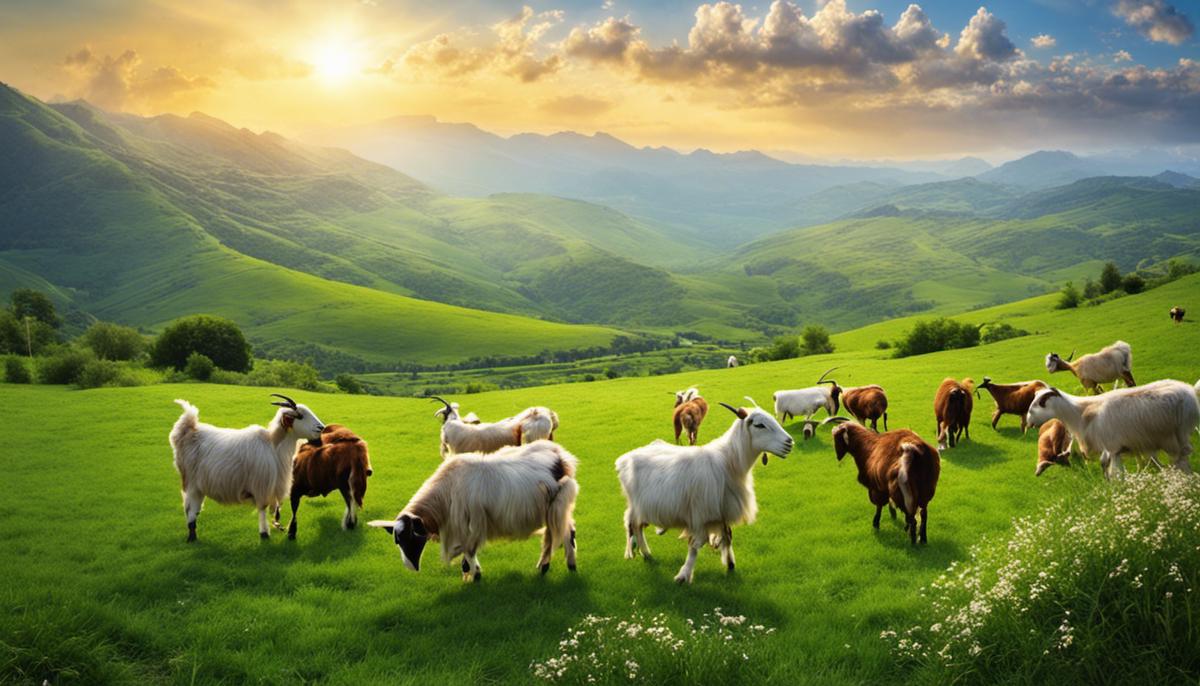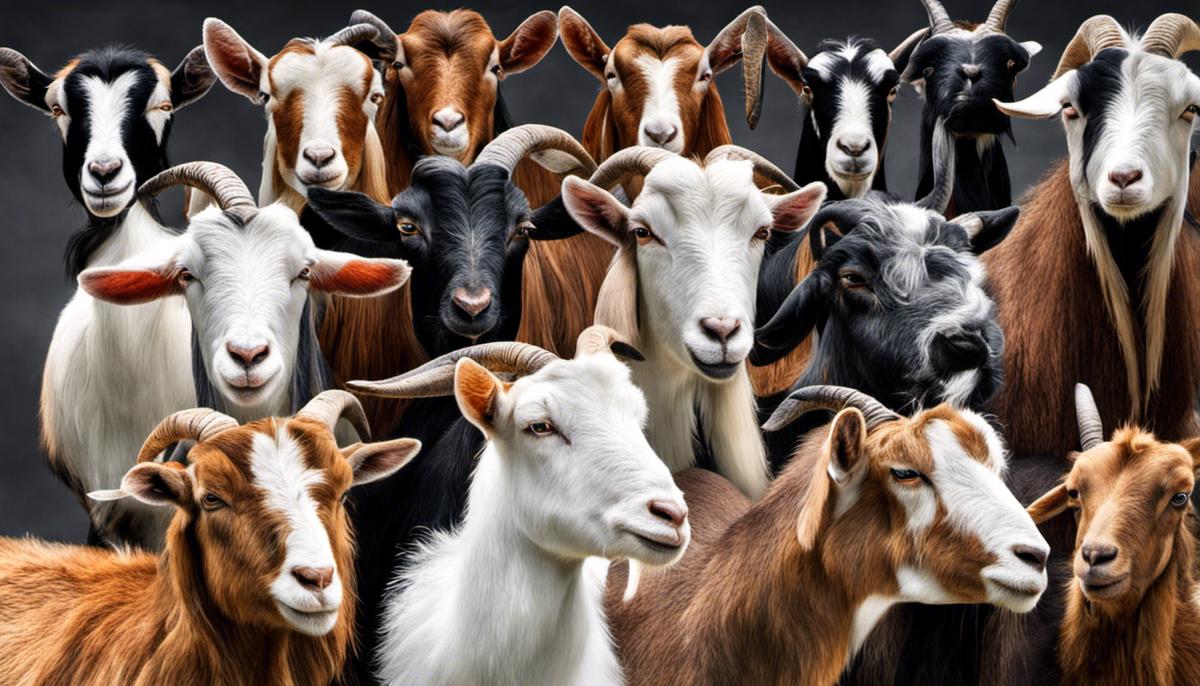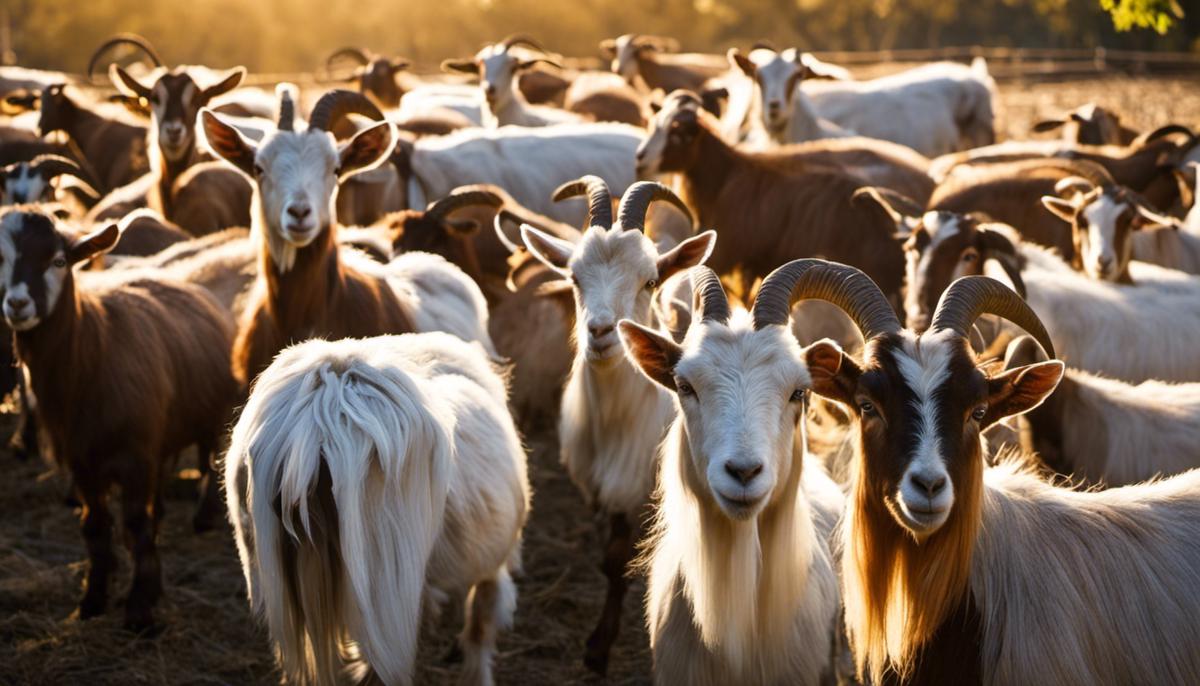

Agridisk
Egypt - Alexandria

Goat farming | All about Definition, Methods, Breeds, & Facts
Description: Goat farming, an agricultural activity as old as human civilization, continues to be an integral and thriving part of the world's agricultural economy. The process is not just about rearing goats; it's an intricate system of tasks and decisions backed by scientific frameworks, environmental implications, and market forces. In this in-depth insight, the science behind goat farming will be disclosed, unraveling the physiological, biological, and ecological aspects that significantly impact the health and growth of goats. Subsequently, we will probe into the multifaceted methods of goat farming, from time-honored practices to present-day strategies and futuristic trends. A firm grasp of the principal goat breeds, their distinctive traits, advantages, and the challenges of nurturing them will also be outlined. Lastly, an empirical comprehension of goat farming, supported by market tendencies, international demand, and the effect of climate change on the industry, will all be brought to light. Successful goat farming is less about the husbandry skills involved and more about understanding, to a significant extent, the scientific principles underpinning this industry. Whether for dairy, meat, or fiber production, a clear comprehension of these principles is vital in optimizing goat farming activities. This article provides an illuminative foray into these scientific principles drawn from the disciplines of biology, ecology, nutrition, and genetics research. At the crux of goat farming is an understanding of the goats' biology and ecology. Goats, being ruminants, possess a unique digestive system with a four-chambered stomach, enabling them to convert a wide range of feedstuffs into nutrients. Understanding the intricate biology of the ruminant digestive process is paramount to the successful feeding of goats. Within this realm of knowledge is the all-important ecology of the rumen, where symbiotic microbial fermentation of food takes place to yield volatile fatty acids, the primary energy source for these animals. What this means is that successful goat farming hinges greatly upon maintaining an optimized rumen environment. Another foundational element is the principle of nutritional science. Like all other animals, goats require specific nutrients for growth, reproduction, lactation, and maintenance of body functions. Balancing feed rations to meet the goats' specific physiological stages—be it for lactating does or growing kids—is thus a cornerstone of successful goat farming. This underlines the imperative of understanding the nutritional composition of common goat feeds, and how to formulate appropriate diets whilst taking into account the intrinsic variations in individual animals and environmental conditions. Then, within the orbit of successful goat farming is also the discipline of genetics. Genetic science provides invaluable insights into breeding decisions, leading to improved productivity, whether in terms of milk yield, meat quality, or fiber attributes. The understanding and application of genetic principles such as heritability and selection can greatly make a difference in the long-term viability of a goat farming operation. Meanwhile, disease prevention and management are aspects that cannot be overlooked in goat farming. Here, veterinary science steps in to provide benchmark principles for disease prevention and control. Fundamental understanding of goat diseases, their transmission mechanisms, preventive measures, and their effective treatments forms a crucial part of maintaining a healthy and productive herd. The science of goat farming extends to understanding goats' natural behavior as well. Goats, being highly social animals, exhibit a range of behaviors that can impact their health and productivity. A comprehensive understanding of their social structure, their behavior in relation to access to feed and water, and their adaptation to different environmental conditions can significantly enhance a farm's success. In a nutshell, goat farming is indeed an intriguing interplay of several scientific disciplines. Knowledge about the biological, ecological, nutritional, genetic, and behavioral aspects of these animals—combined with practical expertise—leads to the enhancement of farming efficiency and overall productivity. This, essentially, is the science and art of successful goat farming. Two chief methodologies applied in goat farming include an integrated management system and rotational grazing system, each possessing distinct features that influence overall productivity. An integrated management system forms a holistic approach that amalgamates various components of goat farming. This multifaceted system primarily emphasizes harmony between different farm units, including crops, forestry, and livestock. For goats, integration with livestock or crops is practiced widely. While goats feed on crop residues and agricultural by-products, the crops, in turn, utilize goat manure as a natural fertilizer, creating an economically sustainable cycle. Integration with forestry, dubbed as 'Silvopasture,' allows goats to leverage their browsing tendencies by feeding on the shrubs, leaves and tree barks, typically unpalatable to other livestock. Such strategic utilization of resources assists in mitigating feed costs. Furthermore, it aids in enhancing soil fertility, improving biodiversity, and preventing soil erosion. However, striking a balance to prevent overgrazing and retaining forest productivity could prove challenging. On the other hand, a rotational grazing system involves sequential repositioning of animal groups across diverse grazing fields or 'paddocks.' Essentially, this methodology enhances pasture utilization, reduces on-farm feed costs, and encourages the natural behavioral patterns of goats. Rotational grazing also minimizes the spread of parasitic diseases by curtailing repeated exposure to infected areas. Nonetheless, the implementation of a rotation system necessitates a robust understanding of the habitat preferred by goats, forage quality, and herd nutrition requirements. Accurate calculations of paddock size, forage growth, and proper scheduling of rotational circles are considered paramount to avoid overgrazing or underutilization of pastures. Efficient record-keeping provides an incremental edge to goat farming methodologies. A comprehensive log documenting details such as pedigree, breeding, health events, milk production, and sales records streamlines decision-making processes. This record allows for identification of productive and unproductive goats, helps improve genetic selection, and facilitates prudent management decisions. Rounding up, it's evident that the diverse methodologies applied in goat farming, including integrated management, rotational grazing, and record-keeping, are devised not merely to boost quantity but also to enhance the quality. They impact productivity by optimizing resources, reducing costs, maintaining herd health, and ultimately ensuring the sustainability and profitability of goat farming. The harmonious amalgam of scientific disciplines reflected in these methodologies exemplifies the mesmerizing complexity of goat farming that stretches beyond the frontier of simple pastoral imagery. Diving deeper into the intricate world of goat husbandry, it is imperative to underscore the diversity among goat breeds. Each breed, defined by an array of characteristics, not only varies significantly in its exterior features, but also in its production capacity and adaptability, thereby having unique advantages suitable for different farming objectives. Boer, for instance, originating from South Africa, is primarily distinguished for meat production. Evidence suggests these goats live up to their reputation, demonstrating high growth rates and excellent carcass qualities. Similarly, Spanish goats, hardy and prolific breeders, are utilized for both meat and hide production. Their adaptability to harsh environments makes them an asset to farmers. In contrast, dairy farmers may lean towards breeds like the Saanen and Nubian. The Saanen, often referred to as the ‘Holstein of the goat world’, is renowned for its high milk production, while the Nubian, noted for its distinctive pendulous ears, produces milk with a higher butterfat content, enhancing its culinary value. Pertaining to fiber production, the Angora and Cashmere stand out. The former produces mohair, a long, lustrous fleece coveted in the textile industry. The latter, on the other hand, yields cashmere, a fiber renowned for its exceptional softness and warmth. When considered from the perspective of farming objectives, it becomes evident that selection of specific breeds can significantly impact productivity and sustainability. Choice of breed is thus, a crucial aspect of any integrated management system in goat farming. Reflecting on integration with crops and livestock, goats, known grazers and browsers, can contribute to the maintenance of pasture quality. This is especially true if a rotational grazing system is implemented. Such a system ensures pastures have adequate recovery time, which promotes improved growth and prevents soil erosion. This methodology also contributes to breaking the life cycles of parasites, thus reducing disease risk. Simultaneously, integrating goat farming with forestry, or silvopasture, has distinguished benefits. Trees can provide shade and protection, while the browsing nature of goats can aid in managing undergrowth, leading to healthier ecosystems. However, appropriate selection and management of tree species is required to prevent toxicity. However, implementation of these methodologies, such as integrating goats with crops and forestry, or implementing a rotational system, requires conscientious record-keeping. Accurate records provide critical insights into health trends, breeding cycles, and production efficacy, playing an instrumental role in the decision-making process and overall productivity. Broadly, in the ever-complex world of goat farming, recognizing the inherent uniqueness amongst breeds, paired with the thoughtful integration of farming practices, can lead not only to successful farming operations but also a more balanced and sustainable agricultural ecosystem. Informed decisions, rooted in keen observations and records, are thus the bedrock of responsible and prolific goat farming. Utilizing key statistics of the goat farming industry highlights the growth and potential of this sector. According to the Food and Agriculture Organization (FAO) of the United Nations, over 60 percent of the world's meat and milk production comes from goats, primarily from Asia and Africa. In the United States, it's estimated that there are over 2.6 million goats farmed annually, a number that has been steadily increasing over the past decade. As society shifts towards sustainability, goats' capabilities to thrive on a diverse range of forage and adapt to harsh weather conditions make them a valuable resource in the farming ecosystem. The small space requirements and lower maintenance costs of goats compared to other livestock have economic advantages as well. They yield products like milk, meat, fiber, and hide, creating multiple income streams for farmers. Considering future trends, goat farming is undergoing a significant shift towards goat dairying. In fact, goat milk holds a market share as high as 2 percent of the dairy market. The consumption of goat cheese in the U.S. has been increasing at a rate of approximately 20 percent per year over the past decade. The nutritional benefits of goat milk, including easier digestion and lower lactose levels, are driving this trend. With regard to meat production, market trends vary regionally. Boer and Spanish breeds are primarily reared for meat, with the former being favored for rapid weight gain and the latter for hardiness and adaptability. Both breeds offer high carcass yield, making them profitable for farmers. In terms of fiber production, Angora and Cashmere goats are notable for mohair and cashmere respectively. The United States is a primary producer of mohair, second only to South Africa. The international demand for this high-quality fiber is rising, thus increasing its market value. Integration methods of goat farming often involve a synergy with crop cultivation and forestry, where goats act as natural weed controllers and contribute to soil fertility through their manure. Such interrelationships also help diversify farmers' income sources, increasing their resilience against market fluctuations. Record-keeping in goat farming is of paramount importance for an optimized production chain, enabling farmers to track growth rates, fertility patterns, and disease occurrence. Such information is crucial for yield predictions and operational adjustments, thereby playing a significant role in profitability. The industry's trajectory is driven by the intertwined aspects of advances in goat breed potentials, integration methodologies, and effective record-keeping practices. Goat farming is considerably more than a rural pastime; it's an ancient science rooted in the understanding of physiological, ecological, and biological principles. The ideological shifts in goat rearing methods highlight the responsiveness of this sector to the changing tides of ecological consciousness and market dynamics. More so, a deeper understanding of goat breeds accentuates the rich diversity, each with unique benefits and challenges associated with its rearing. The application of statistical truths to goat farming provides a sense of perspective, revealing an industry shaped by market trends, global demand, and the ever-looming shadow of climate change. Treating goat farming with the academic attention and meticulous study it deserves not only elevates the discourse about this enduring agricultural practice but also draws out the vast potential it holds for generations to come.Goat farming | All about Definition, Methods, Breeds, & Facts
The Science Behind Goat Farming
The Science and Art of Successful Goat Farming Unveiled

Methods of Goat Farming
Beyond the nuances of a goat's biology, genetics, and health, an intricate medley of methodologies contributes to the effective management of goat farming.

Different Breeds of Goats and their characteristics

Factual Insights into Goat Farming
In conclusion, current statistics & facts depict a promising future for goat farming, not merely as a result of the multiple product yield potential that goats offer, but also due to their role in promoting sustainable and integrated farming practices.